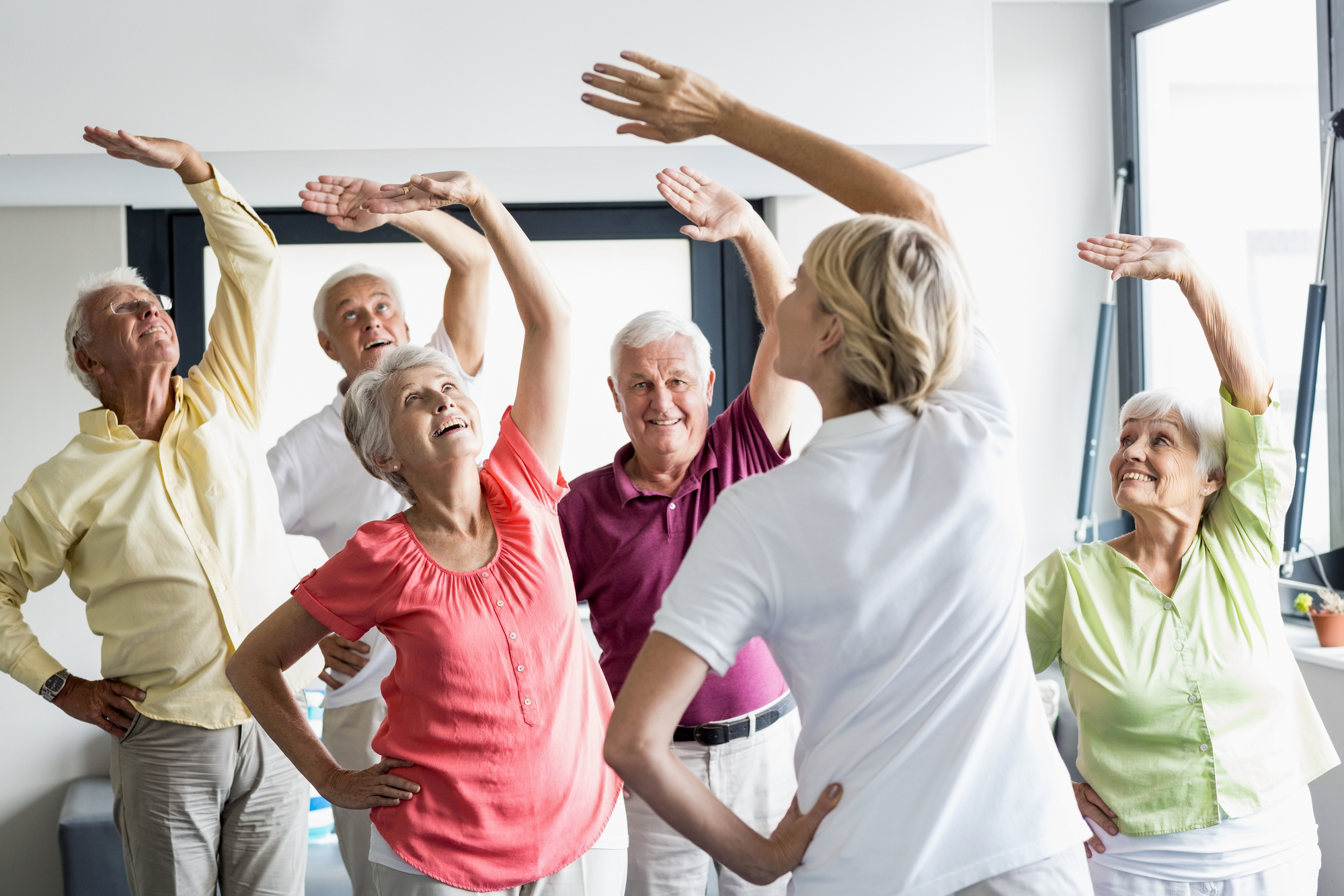According to the World Health Organization, physical inactivity is the fourth leading risk factor for global mortality. This alarming statistic underscores the importance of regular exercise, especially for seniors. From improving core strength to help prevent falls to mitigating signs of depression, regular physical activity can help improve the overall quality of life. However, for those seniors who have struggled to integrate routine exercise, then the following aims to provide an overview of the science behind seniors and exercising. In addition to the benefits of exercise for seniors, we’ll explore some impactful exercises, and how an active lifestyle can positively impact mood, longevity, and overall well-being.
The Benefits of Exercise for Seniors
Regular exercise offers a multitude of physical and mental benefits for seniors. From a physical perspective, exercise can improve cardiovascular health by lowering blood pressure, reducing the risk of heart disease, and increasing blood circulation. Plus, core exercises and other strength-building activities help build and maintain muscle and flexibility, which can prevent falls and improve mobility, allowing seniors to maintain their independence for longer.
The National Institute of Health (NIH) notes that physical activity has a positive impact on mental health. Various studies indicate that exercise has been shown to reduce the risk of cognitive decline and dementia by improving blood flow which promotes brain health. Additionally, exercise can also alleviate symptoms of depression and anxiety, improve mood, and boost self-confidence and overall sense of well-being. Plus, exercise provides an opportunity for social interaction, which can combat loneliness and isolation, common issues among seniors.
Perhaps most notably, numerous scientific studies have linked regular exercise to increased longevity. A study published in the British Journal of Sports Medicine found that regular physical activity was associated with a lower risk of premature death from various causes, including cardiovascular disease, cancer, and other chronic conditions.
Exercise is crucial for seniors to maintain physical and cognitive health, independence, and overall well-being. Family Doctor, a publication from the American Academy of Family Physicians, highlights the main scientific benefits of exercise for older adults:
- Improves Cardiovascular Health
- Maintains Muscle Mass and Strength
- Increases Bone Density
- Enhances Cognitive Function
- Manages Chronic Conditions
- Boosts Immunity
- Improves Mental Health
Finally, the CDC recommends seniors get at least 150 minutes of moderate aerobic activity and two days of muscle-strengthening activities per week for optimal health benefits. However, any amount of exercise is better than none for aging adults, so just getting started is the most important takeaway from all of the supporting science.
The Most Impactful Exercises for Seniors
Another organization that supports the importance of exercising for seniors is the National Council on Aging which also emphasizes that exercise is perhaps the most important of any senior activities. Like the CDC, WHO and NIH, the National Council on Aging notes that exercise not only supports one’s physical health but also contributes to both emotional and mental well-being. When it comes to the most impactful exercises for seniors, a well-rounded approach that incorporates various types of activities is recommended. For example, when looking to create an impactful exercise program, then seek to incorporate the following variations:
- Low-impact aerobic exercises, such as walking, swimming, or cycling, are excellent choices for improving cardiovascular health and aiding weight management. These activities are gentle on the joints and suitable for seniors with mobility issues.
- Strength training exercises, like using resistance bands or light weightlifting, are crucial for building and maintaining muscle mass, which naturally declines with age. Stronger muscles not only improve overall strength and mobility but also help prevent falls and injuries. It’s essential to start slowly and focus on proper form to avoid strain or injury.
- Balance and flexibility exercises, such as yoga or tai chi, offer numerous benefits for seniors. These activities improve balance and coordination, reducing the risk of falls, while also promoting flexibility and mobility. Additionally, practices like yoga and tai chi emphasize the mind-body connection, which can help alleviate stress and promote relaxation.
To help get started, then consider these easy senior exercises. For more, then Caring Senior Services shares some tips to remain safe while establishing your exercise routine.
- Start Slowly: Begin with low-intensity exercises and gradually increase duration or intensity as your body adapts. As you age, proper warm ups and cool downs remain essential to your sustained health.
- Consult a Doctor: Discuss your exercise plan with your physician and ensure you are cleared to start your desired plan, especially if you have any chronic conditions or limitations.
- Set Realistic Goals: Set achievable goals like improving balance, strength or endurance that are age appropriate. More importantly, celebrate your milestones to stay motivated.
- Proper Form and Safety: Take the time to learn proper form (especially for strength training) prior to getting started and wear appropriate shoes and clothing for your chosen activity.
- Stay Hydrated: Drink water before, during and after exercise sessions, even if you are not thirsty because proper hydration is crucial for seniors to avoid dizziness or falls.
Incorporating regular exercise into one’s lifestyle is crucial for seniors to maintain physical and mental well-being, improve quality of life, and potentially extend lifespan. The benefits of exercise are numerous, ranging from improved cardiovascular health and increased muscle strength to reduced risk of cognitive decline and enhanced mood.


